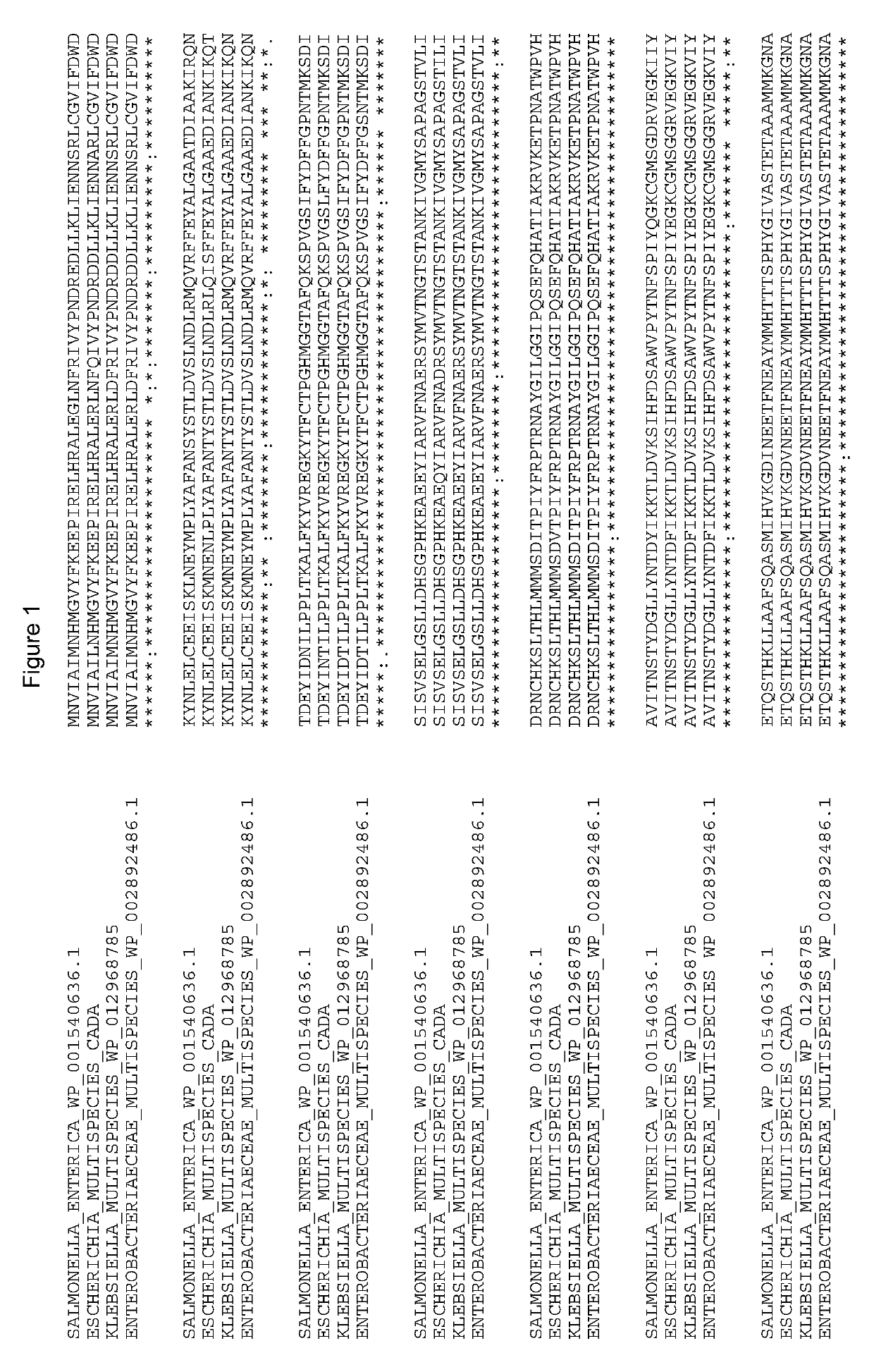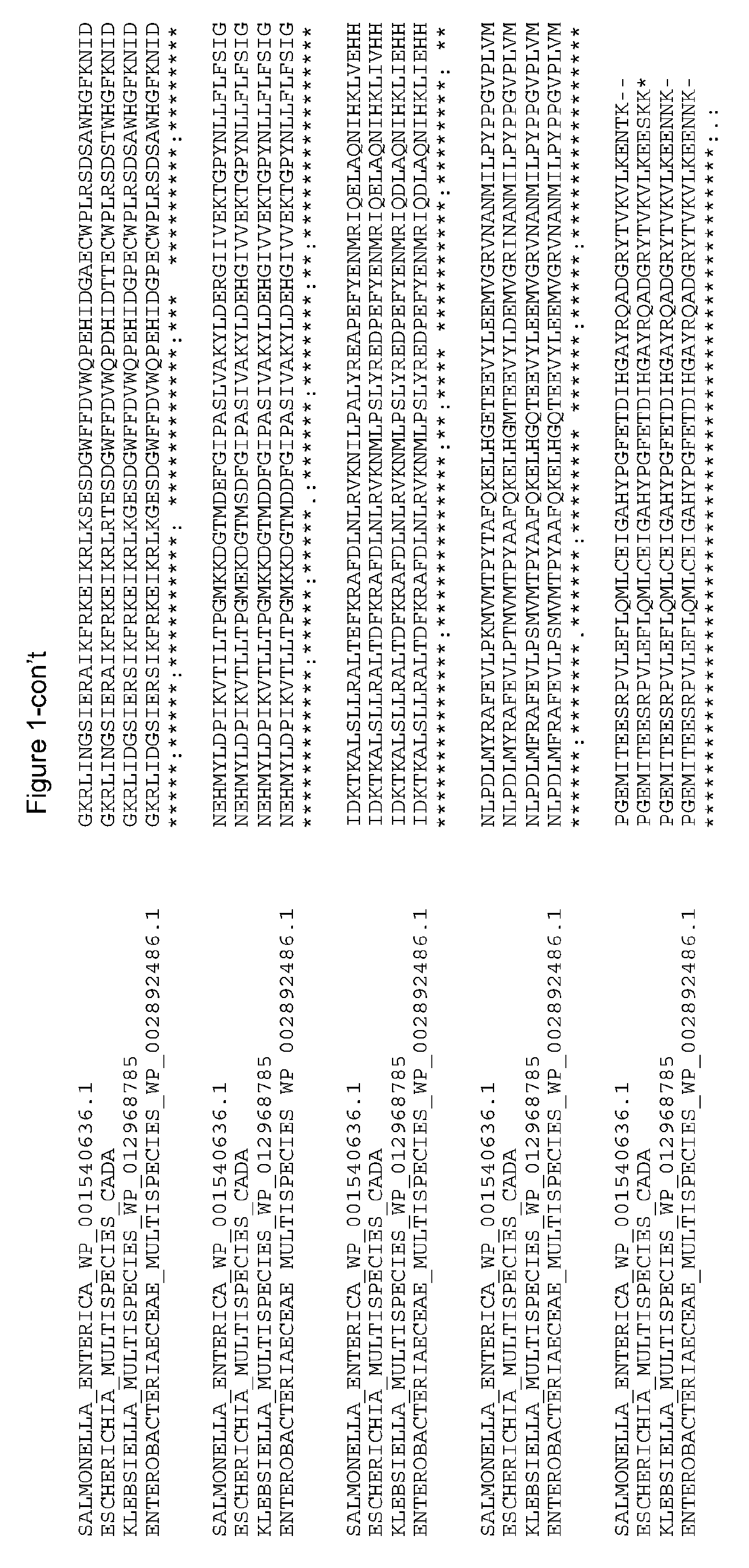Lysine Decarboxylases having modifications At Titratable Amino Acids
a technology of lysine decarboxylase and titratable amino acids, which is applied in the field of lysine decarboxylases having modifications at titratable amino acids, can solve the problems of reducing affecting the activity, solubility and stability of an enzyme, and affecting the activity of acid decarboxylase, etc., to achieve a wide range of ph, increase stability, and high reaction ra
- Summary
- Abstract
- Description
- Claims
- Application Information
AI Technical Summary
Benefits of technology
Problems solved by technology
Method used
Image
Examples
example 1
on of pKa Values of Histidine Residues within CadA
[0100]There is research on various methods to calculate pKa values of a protein (Yang, et al., Proteins 15, 252-265, 1993; Van Vlijmen H W, et al., Proteins 33, 145-158, 1998; Rabenstein B & Knapp E W, Biophysical Journal 80, 1141-1150, 2001; Kieseritzky G & Knapp E W, Proteins 71, 1335-1348, 2008; Kilambi K P & Gray J J, Biophysical J 103, 587-595, 2012). The difference between computational and experimental pKa values for most amino acid residues tested in the literature is 0.5-0.75. Here, we used the linearized Poisson-Boltzmann equation-based pKa calculation method to predict the pKa values of the 24 histidine residues in the CadA protein. A summary of the pKa values calculated is presented in Table 1.
TABLE 1Calculated pKa values of 24 histidine residues in the CadA proteinof E. coli.Residue NumberpKa96.2236.41520.9193>20.0197−6.62451.12500.22826.3300−6.4328>20.03662.9379−0.73962.2402−0.84586.6474−3.1483−3.65216.15941.55996.46001...
example 2
ion of Plasmid Vectors that Encode CadA
[0103]A plasmid vector containing wild-type E. coli cadA (SEQ ID NO: 1), which encodes the lysine decarboxylase CadA (SEQ ID NO: 2), was amplified from the E. coli MG1655 K12 genomic DNA using the PCR primers cadA-F and cadA-R (Table 11), digested using the restriction enzymes ScI and XbaI, and ligated into pUC18 to generate the plasmid pCIB60. The 5′ sequence upstream of the cadA gene was optimized using the PCR primers cadA-F2 and cadA-R2 to create pCIB71.
example 3
ion of Plasmid Vectors that Encode CadA with a Mutation at D457
[0104]Primer pairs were designed to modify the amino acid at position 457 of the cadA gene in pCIB71 using Quickchange PCR. The mutations were verified using DNA sequencing, and the plasmids carrying each mutation at amino acid position 457 were labeled pCIB71-D457X, where X is the amino acid that replaced the aspartate residue.
PUM
| Property | Measurement | Unit |
|---|---|---|
| pKa | aaaaa | aaaaa |
| pKa | aaaaa | aaaaa |
| pH | aaaaa | aaaaa |
Abstract
Description
Claims
Application Information
 Login to View More
Login to View More - R&D
- Intellectual Property
- Life Sciences
- Materials
- Tech Scout
- Unparalleled Data Quality
- Higher Quality Content
- 60% Fewer Hallucinations
Browse by: Latest US Patents, China's latest patents, Technical Efficacy Thesaurus, Application Domain, Technology Topic, Popular Technical Reports.
© 2025 PatSnap. All rights reserved.Legal|Privacy policy|Modern Slavery Act Transparency Statement|Sitemap|About US| Contact US: help@patsnap.com


